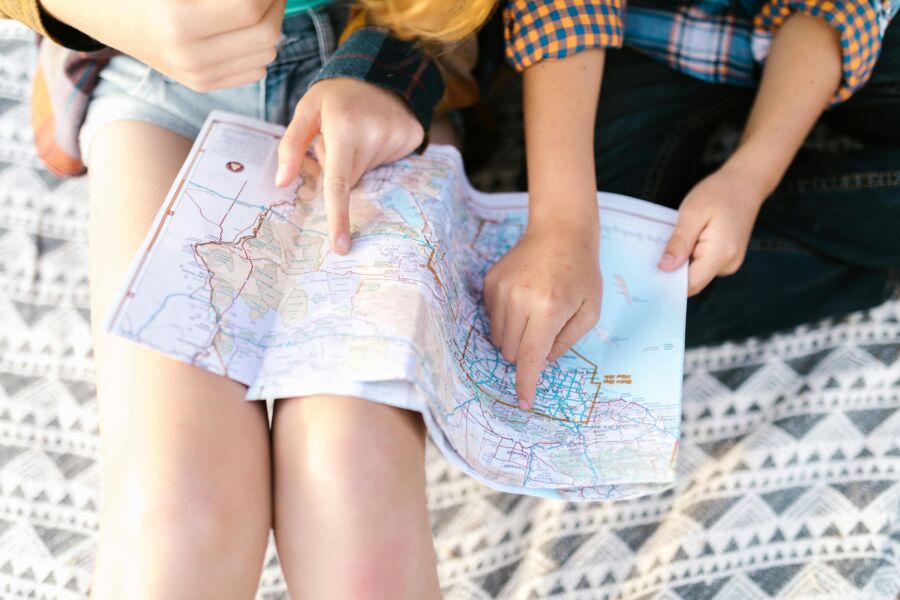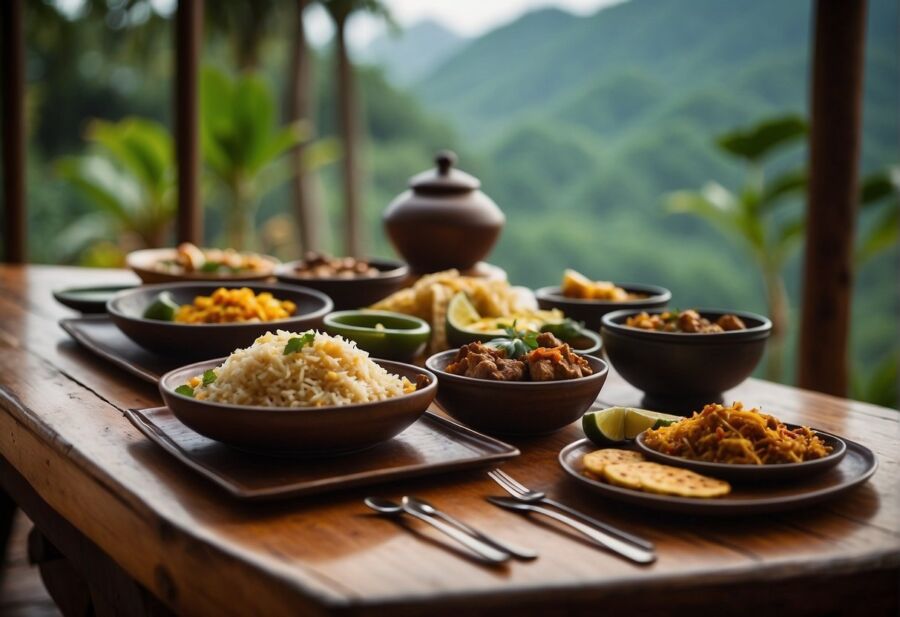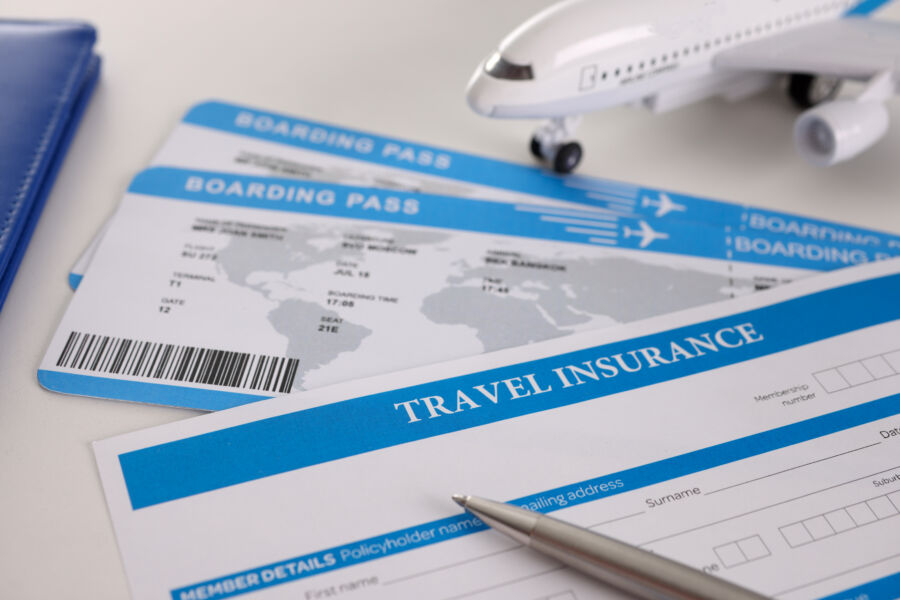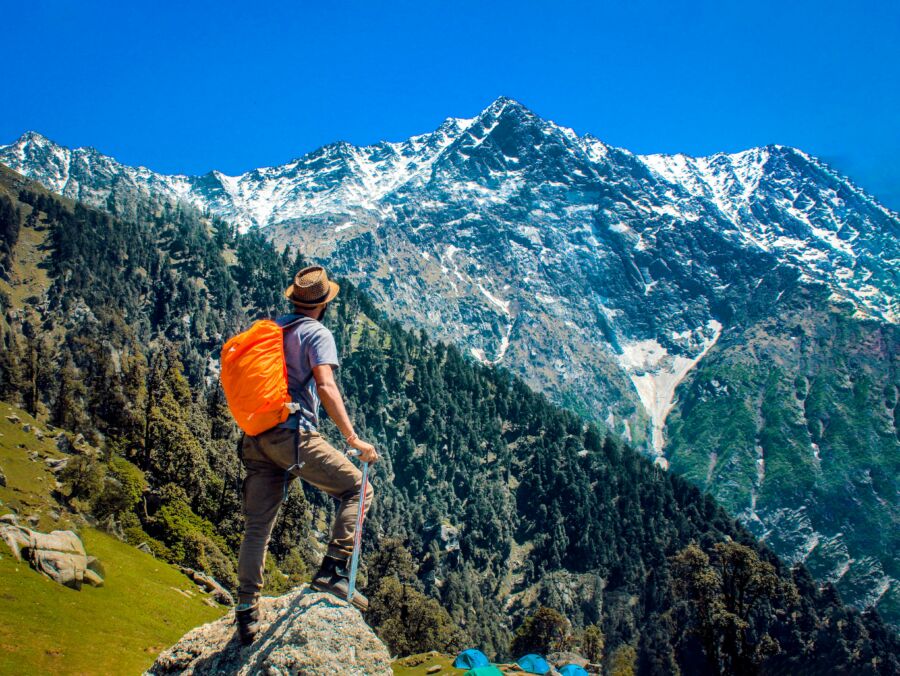
6 Month Round the World Trip Cost: See the Globe for $15K
Dreaming of a six-month adventure around the world? You’re not alone. Many travelers yearn to explore distant lands for an extended period. But the big question is: how much does it cost? A six-month round-the-world trip typically costs between $15,000 and $25,000 per person, depending on your travel style and destinations.
The price tag may seem steep, but remember you’re paying for half a year of life-changing experiences. Your costs will vary based on where you go, how you travel, and what you do. Budget-friendly countries in Southeast Asia or South America can stretch your dollars further than pricey spots in Western Europe or Australia.
Smart planning is key to keeping costs down. Mix up your lodging with hostels, budget hotels, and even some camping. Look for flight deals and consider overland travel to save money. Eat like a local and cook your own meals when possible. With some savvy choices, you can have an amazing trip without breaking the bank.
Contents
- Key Takeaways
- Understanding the Costs of Long-Term Travel
- Travel Gear and Essentials
- Daily Living Expenses
- Entertainment and Sightseeing
- Miscellaneous Fees
- Accommodation Options
- Budget Accommodations
- Mid-Range Stays
- Splurge-Worthy Lodgings
- Transportation Strategy
- Local and Regional Transport
- International Flight Planning
- Aligning Flight Costs with Budget Goals
- Using Points and Miles
- Finding Affordable Flights
- Credit Card Strategies
- Creating a Travel Itinerary
- Cultural Experiences and Landmarks
- Natural Wonders and Adventures
- Choosing Destinations Wisely
- Exploring Europe
- Journeying through Southeast Asia
- Adventures in South America
- Food and Dining on the Road
- Street Food and Local Eateries
- Dining Out Versus Cooking
- Insuring Your Trip Against the Unexpected
- Adopting a Travel Style and Culture
- Backpacking Versus Luxury Travel
- Digital Nomad Lifestyle
- More Travel Guides
Key Takeaways
- Costs range from $15,000 to $25,000 for a six-month world trip
- Your travel style and destinations greatly impact the overall price
- Smart planning and budgeting can help reduce expenses significantly
Understanding the Costs of Long-Term Travel
Planning a 6-month trip around the world takes some serious budget savvy. You’ll need to account for everything from your backpack to your beer money. Let’s break down the main expenses you’ll face on your epic adventure.
Travel Gear and Essentials

First things first – you gotta gear up! A good backpack is worth its weight in gold. Expect to drop $150-$300 on a quality pack that’ll survive months of abuse. Don’t forget other must-haves:
- Comfy walking shoes ($60-$120)
- Quick-dry clothes ($20-$50 per item)
- Universal power adapter ($15-$30)
- Portable charger ($20-$50)
- Toiletries kit ($30-$60)
Pro tip: Hit up thrift stores for some of your gear to save major cash. And remember, you can always buy stuff as you go. No need to pack your entire life!
Daily Living Expenses

Your day-to-day costs will make or break your budget. They’ll vary wildly depending on where you go. Southeast Asia? Dirt cheap. Western Europe? Not so much.
Here’s a rough breakdown of daily costs in budget-friendly spots:
- Hostel bed: $5-$15
- Street food meal: $1-$5
- Local beer: $1-$3
- Public transport: $0.50-$2
In pricier places, double or triple those figures. Cooking your own meals and staying in hostels or Airbnbs can slash your costs. And don’t be shy about haggling – it’s expected in many countries!
Entertainment and Sightseeing
You didn’t come all this way to sit in your hostel! Budget for fun stuff like:
- Museum entries: $5-$20
- Guided tours: $10-$50
- Adventure activities: $20-$100+
Look for free walking tours in cities – just tip your guide. Many museums have free days too. And always ask about student or youth discounts if you qualify.
Miscellaneous Fees
Don’t forget these sneaky expenses that can add up quick:
- Visas: $20-$100+ per country
- Travel insurance: $300-$600 for 6 months
- ATM fees: $3-$5 per withdrawal
- Laundry: $3-$10 per load
Get a travel credit card with no foreign transaction fees. And consider a debit card that reimburses ATM fees worldwide. Your future self will thank you!
Accommodation Options

Finding the right place to stay can make or break your 6-month world trip. Your budget and comfort preferences will shape your choices.
Budget Accommodations
Hostels are a backpacker’s best friend. You’ll find dorm beds for $10-20 per night in many countries. Bring earplugs and a sleep mask for shared rooms. Some hostels offer private rooms too.
Booking sites can help you find good deals. Couchsurfing lets you stay with locals for free. It’s a great way to meet people and save money. Just be a considerate guest.
Camping is another cheap option in some places. Pack a tent if you plan to rough it. Some hostels even have campsites.
Mid-Range Stays
Airbnb and vacation rentals give you more space and privacy. Expect to pay $30-80 per night for a private apartment or room. Having a kitchen can help you save on food costs.
Budget hotels are a step up from hostels. You’ll get your own bathroom and more peace and quiet. Prices range from $30-100 depending on the country.
Guesthouses offer a homey feel at reasonable rates. They’re common in Asia and can be a great value.
Splurge-Worthy Lodgings

Treat yourself to nicer hotels now and then. Look for deals on luxury spots in cheaper countries. You might snag a 5-star room for $100 that would cost $500 back home.
Vacation rentals can be luxurious too. Splurge on a villa with friends to split costs.
Unique stays like treehouses or overwater bungalows are worth the splurge for special occasions. Budget $150-300+ for these memorable nights.
Mix up your accommodations to keep things interesting. A few nights of luxury can recharge you after weeks in hostels.
Transportation Strategy

Planning your travel moves wisely can save you big bucks on a 6-month world trip. Smart choices for getting around locally and booking flights between countries make a huge difference to your budget.
Local and Regional Transport
Public transit is your wallet’s best friend in most places. City buses and metro systems are cheap and efficient for exploring. In Southeast Asia, tuk-tuks and motorcycle taxis offer fun, budget-friendly rides. Trains work great for longer trips within countries or regions.
Consider getting rail passes in Europe or Japan to save money on multiple journeys. For flexibility between cities, look into car rentals in some areas. Just watch out for high gas prices and parking fees.
International Flight Planning
Book your big international flights early to snag deals. Look at round-the-world ticket options from airline alliances – they can save you cash if you’re hitting multiple continents. Budget airlines are great for shorter hops between nearby countries.
Be flexible with dates and airports to find cheaper fares. Red-eye and midweek flights often cost less. Use flight search tools like KAYAK to compare prices across dates and airlines. Don’t forget to factor in baggage fees when budgeting for flights.
Aligning Flight Costs with Budget Goals

Cutting flight costs can make a big difference in your 6-month world trip budget. Smart strategies help you save money and stretch your travel funds further.
Using Points and Miles
Loyalty points and miles are your secret weapon for cheaper flights. Sign up for airline loyalty programs and start collecting miles now. You can earn points on everyday spending with travel credit cards too. Some cards offer huge sign-up bonuses – like 50,000 miles or more. That could be enough for a free international flight!
Look for cards that let you transfer points to multiple airlines. Capital One miles work with lots of airline partners. This gives you more options to book award flights. Don’t forget to check your credit card’s travel portal too. You might find good deals there.
Be flexible with dates and destinations to get the most value from your miles. Off-peak awards often cost fewer points. Plan ahead and book early for the best availability.
Finding Affordable Flights
Being flexible is key to scoring cheap flights. Use flight search tools that let you view prices for a whole month. This helps you spot the cheapest days to fly. Consider budget airlines for shorter hops between countries.
Mix and match airlines to build cheaper itineraries. Sometimes booking two separate tickets costs less than one through fare. Just leave plenty of time between flights in case of delays.
Sign up for price alerts on routes you’re interested in. When fares drop, you’ll know right away. Don’t forget to clear your browser cookies or use incognito mode when searching. This can sometimes reveal lower prices.
Credit Card Strategies
Travel credit cards are powerful tools for saving on flights. Look for cards with big sign-up bonuses and category spending multipliers. You could earn enough points for several free flights just by hitting the minimum spend.
Some cards offer annual travel credits or free checked bags. These perks can add up to hundreds in savings. A few even provide airport lounge access, making long layovers more comfortable.
Be smart about which card you use for bookings. Some offer extra points on travel purchases or better travel insurance. Just remember to pay off your balance in full each month. Interest charges can quickly wipe out any rewards you earn.
Creating a Travel Itinerary

Planning your route is key to making the most of your 6-month adventure. You’ll want to balance popular spots with off-the-beaten-path gems to create unforgettable memories.
Cultural Experiences and Landmarks
Start by listing the must-see cultural sites on your bucket list. The Taj Mahal in India, Machu Picchu in Peru, and the Great Wall of China are iconic landmarks you won’t want to miss. Mix in some lesser-known spots too – maybe a traditional tea ceremony in Japan or a cooking class in Thailand.
Don’t forget to book sightseeing tours for guided experiences. These can give you deeper insights into local history and customs. Leave room in your schedule for spontaneous discoveries too. Some of the best cultural experiences happen when you wander down a random street or chat with locals at a neighborhood cafe.
Natural Wonders and Adventures
Now it’s time to add some outdoor thrills to your itinerary. How about hiking the Inca Trail to Machu Picchu or scuba diving in the Great Barrier Reef? If you’re feeling extra adventurous, consider a safari in Africa or trekking in the Himalayas.
Look into day trips and activities that showcase natural beauty. You could go whale watching in Iceland, explore the Amazon rainforest, or take a hot air balloon ride over Cappadocia in Turkey. Mix up your transport too – maybe a scenic train ride through the Swiss Alps or island-hopping by boat in Greece.
Remember to build in some downtime between adventures. You’ll need rest days to recharge and process all the amazing experiences you’re having.
Choosing Destinations Wisely

Picking the right places to visit can make or break your 6-month world trip. Smart choices let you stretch your budget while having amazing experiences. Let’s look at some top regions to explore.
Exploring Europe
Europe offers a mix of history, culture, and modern attractions. You can save money by focusing on Eastern Europe. Croatia has beautiful beaches and old towns without the high prices of Italy. Slovenia gives you Alpine scenery for less than Switzerland.
Spain is pricier but packed with sights. Hit up Barcelona for Gaudi’s wild architecture and tasty tapas. Then head to Granada to see the stunning Alhambra palace.
Mix in some cheaper spots like Portugal or Hungary to balance your budget. Hostels and budget hotels are plentiful. Cook some meals to save cash for splurges on local experiences.
Journeying through Southeast Asia
Your money goes far in Southeast Asia. Thailand is a great starting point with its mix of bustling cities and tropical islands. You can eat like a king on a tiny budget with Bangkok’s street food scene.
Head north to Chiang Mai for temples and elephant sanctuaries. Then island-hop in the south, from party-happy Koh Phi Phi to laid-back Koh Lanta.
Laos and Cambodia offer even lower prices. Explore Luang Prabang’s colonial charm and take a slow boat down the Mekong. In Cambodia, you must see the awe-inspiring temples of Angkor Wat.
Adventures in South America
South America gives you diverse landscapes and vibrant cultures. Start in Peru to trek to Machu Picchu – it’s pricey but worth it. Then head to Bolivia for the otherworldly Salar de Uyuni salt flats.
Brazil’s beaches and Amazon rainforest are incredible, but watch your wallet in Rio. Argentina lets you tango in Buenos Aires and see massive glaciers in Patagonia.
Ecuador is a budget-friendly gem. You can hike volcanoes, explore colonial Quito, and visit the Galapagos Islands (though that’s a splurge).
Food and Dining on the Road

Eating on a 6-month trip can be a big part of your budget and experience. You’ll find lots of tasty options, from cheap street eats to fancy restaurants. Let’s look at how to enjoy local food without breaking the bank.
Street Food and Local Eateries
Street food is your best friend for cheap, yummy meals. In Mexico, you can grab tacos or tamales for just a few bucks. Asia’s night markets are food heaven – try noodle soups, dumplings, and grilled meats for $1-3 a dish. Meanwhile, local eateries called “warung” in Indonesia or “sodas” in Costa Rica offer filling meals for $2-5.
Don’t be scared to try street food! It’s often fresher than restaurant fare. Just pick stalls with lots of local customers. Bring hand sanitizer and your own utensils if you’re worried about germs.
Dining Out Versus Cooking

Eating out doesn’t have to be expensive. Lunch specials are usually cheaper than dinner. In Southeast Asia, a sit-down meal might cost $5-8 per person. Western food tends to be pricier, so stick to local dishes to save cash.
Cooking can save you money, but it’s not always practical. If you stay in hostels or Airbnbs with kitchens, buy groceries and make simple meals. A week’s worth of breakfast supplies might cost $10-15.
Mix it up – cook breakfast, grab street food for lunch, and maybe splurge on a nice dinner once a week. Budget about $10-20 per day for food, depending on where you are. You can spend less in cheaper countries or more if you want fancier meals.
Insuring Your Trip Against the Unexpected

Getting travel insurance is super important for a 6-month round-the-world adventure. You never know what might happen, so it’s better to be safe than sorry!
Look for a policy that covers medical emergencies abroad. This is crucial if you get sick or hurt while traveling. Make sure it includes things like hospital stays, doctor visits, and emergency flights home if needed.
Trip cancellation coverage is another must-have. It can reimburse you if you have to cancel or cut your trip short for reasons like illness or a family emergency. This can save you thousands if something unexpected comes up.
Don’t forget about coverage for lost or stolen belongings. Your gear is valuable, and replacing everything mid-trip would be a huge hassle and expense.
When shopping for insurance, compare a few different providers. Prices can vary a lot. For a 6-month trip, expect to pay anywhere from $300 to $1000+ depending on your age, destinations, and coverage level.
Read the fine print carefully before buying. Some policies have weird exclusions or limits. You want to be sure you’re actually covered for the activities you plan to do.
Consider getting a policy specifically designed for long-term travel. These often have better coverage for extended trips than standard vacation insurance.
Adopting a Travel Style and Culture

Your travel style shapes your entire round-the-world experience. It affects your budget, the places you visit, and how you interact with local cultures.
Backpacking Versus Luxury Travel
Backpacking lets you stretch your budget and meet other travelers. You’ll stay in hostels, eat street food, and use public transport. This style gives you more flexibility but less comfort. You might spend $30-50 per day in cheaper countries.
Luxury travel costs more but offers comfort and unique experiences. You’ll stay in nice hotels, eat at restaurants, and take guided tours. This style can cost $200-500 daily. It’s great if you want to relax and don’t mind spending more.
Mix and match these styles to fit your preferences and budget. You could splurge on a fancy hotel after a week of hostels. Or treat yourself to a nice meal after days of street food.
Digital Nomad Lifestyle
Being a digital nomad lets you work while traveling. You’ll need reliable internet and a quiet workspace. This lifestyle can help fund your trip but requires careful planning.
Look for places with good WiFi and coworking spaces. Southeast Asia and Eastern Europe are popular spots. Budget $1000-2000 monthly for living expenses.
You’ll need to balance work and travel. Set a routine to stay productive. Try working mornings and exploring afternoons. Or work a few days straight, then take time off to travel.
This lifestyle lets you immerse in local culture. You’ll stay in one place longer, make local friends, and really get to know a city. It’s a great way to travel slowly and deeply.



